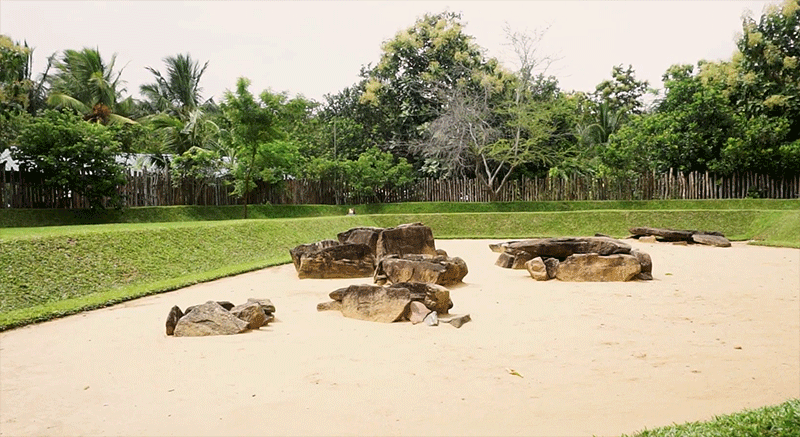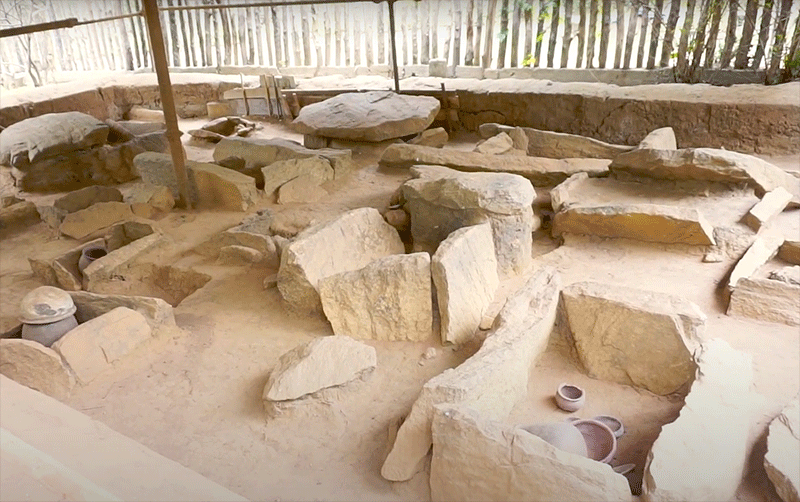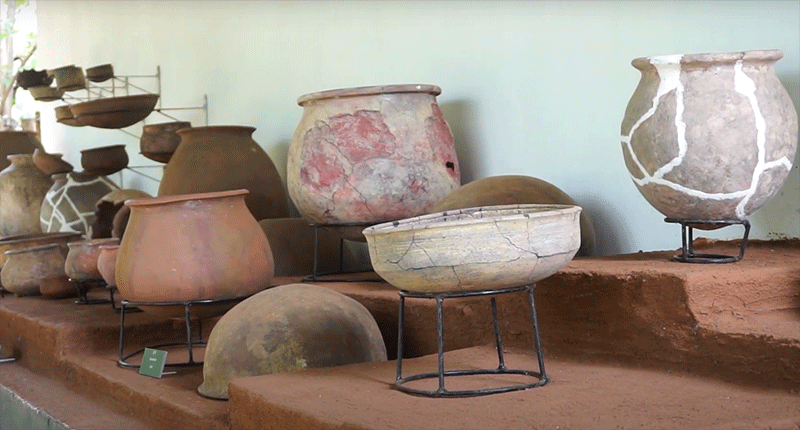
Ibbankatuwa Megalithic Tomb
I was standing at the main entrance of archeological protected site of Ibbankatuwa, an ancient burial ground hidden in Sri Lanka’s cultural triangle. The Ibbankatura megalithic tomb was first discovered in 1970. A large number of remains of pottery, jewellery, and stone slabs were discovered at the site by archaeologists during the excavations in 1983–1984 and again between 1988 and 1990. Sri Lanka’s prehistoric period ranges from 250,000 – 1,000 BC. The transition between the prehistoric period to the historic period is known as the Protohistoric period.
The Ibbankatuwa megalithic tomb is highly important as a historical site, however, it has not been able to get the attention of travellers. It is rarely visited by travellers. Sri Lanka cultural triangle is part of most Sri Lanka tour packages such as 5 days Sri Lanka cultural tour, 3 days Sri Lanka cultural tour, however, travellers choose only a few places to visit during their trip to the cultural triangle. Unfortunately, Ibbankatuwa megalithic tomb is not among those important places.
What is Ibbankatuwa burial ground?
According to the archaeologists Ibbankatuwa had been a megalithic burial ground that originated during the pre-Christian era. A similar kind of burial ground had been discovered in Persia, which is known as cist burials. The artefacts discovered at the site have been able to convince the archaeologists that Ibbankatuwa was not merely a burial ground dating back to 700 – 400 B.C but also a strong piece of evidence to prove of an early civilized culture existed in the world.
Ibbankatuwa archaeological site belongs to the cultural triangle of Sri Lanka, which harbours a large number of archaeological sites of Sri Lanka. Undertaking a cultural triangle tour is on the bucket list of most travellers of Sri Lanka. If you had been to this tropical nation, I’m pretty sure you must have explored at least a part of Sri Lanka’s cultural triangle. Anuradhapura, Polonnaruwa, Sigiriya rock, Dambulla golden temple, and Kandy are the most formidable characters that make up the cultural triangle of Sri Lanka. Despite historical and archaeological importance, places such as Ibbankatuwa archaeological site, Pidurangala ancient temple are been brushed off by most foreign as well as local travellers over other popular tourist places.
What you see in Ibbankatuwa
Ibbankatuwa burial ground is located about 5 km south of Dambulla golden temple on the A9 main road. The archaeological site is spread over 1 sq. km, however only a part of the site is excavated so far and 42 clusters of tombs have been unearthed, and each cluster consists of 10 tombs.

Every tomb has an enclosed structure with granite stone slabs. According to the way of interment two distinct burial customs, urn (bodies were placed in urns and interred) and cist (ashes of deceased were interred) have been identified.
Part of the Ibbankatuwa archaeological site maintains open-air while some important artefacts found at the site are housed in an enclosed area.
Ibbankatuwa cemetery was a part of the Ibbankatuwa settlement. It was located towards the southwest direction from Dambulu Oya and close to the eastern edge of the burial ground. The ancient settlement is estimated to be around 6 hectares in size about 150 meters from the burial ground. The ancient settlement was first excavated in 1988 and then again in 1989, 1990 and 1991.
I first came to know about Ibbankatuwa 3 decades ago as I was in secondary school. Sri Lankan history was a compulsory subject during that time in the school and we learned a lot of historical facts about Sri Lanka. I remember that we learned about Ibbankatuewa those days.

I had been on this travel route many hundred times in the past, but never visited this ancient site, I simply did not have the interest to scratch this place. But I’m glad I decided to visit it. I had been to a large number of archaeological sites on the island but had never been to a place like this. It was a totally unique experience for me.
I feel it showcases the thinking habit and beliefs of the human who lived on the island many thousand years ago. These burial grounds have some similarities to the pyramids of the Egyptians. The ancient Sri Lankan also believed in the afterlife like the Egyptians.
Various items used by the deceased such as tools have been buried along with the cremated remains. Those items were discovered during the excavation and now some of them are been displayed. Those items were buried in large terra-cotta urns and cists as well as in the area between the cists. Clay pots, iron, copper, necklaces, and gold artefacts are among the artefacts found here. The archaeologists have found some gemstones that are not naturally found on the island, those gemstones were fastened to necklaces, indicating those stones may have been imported
